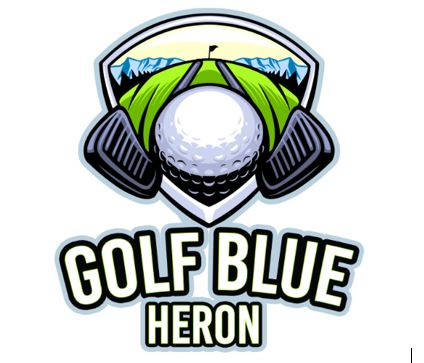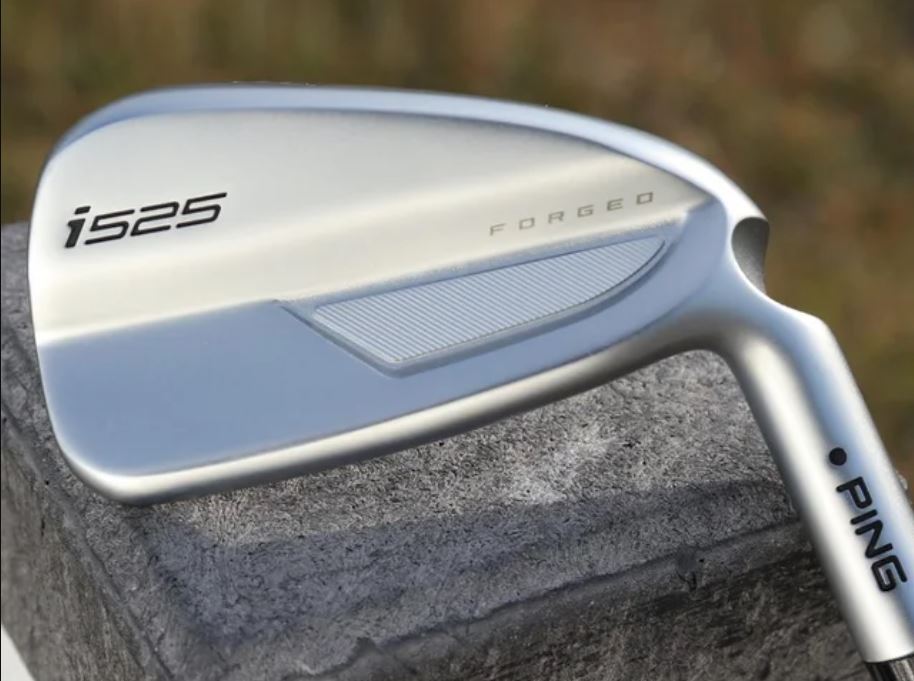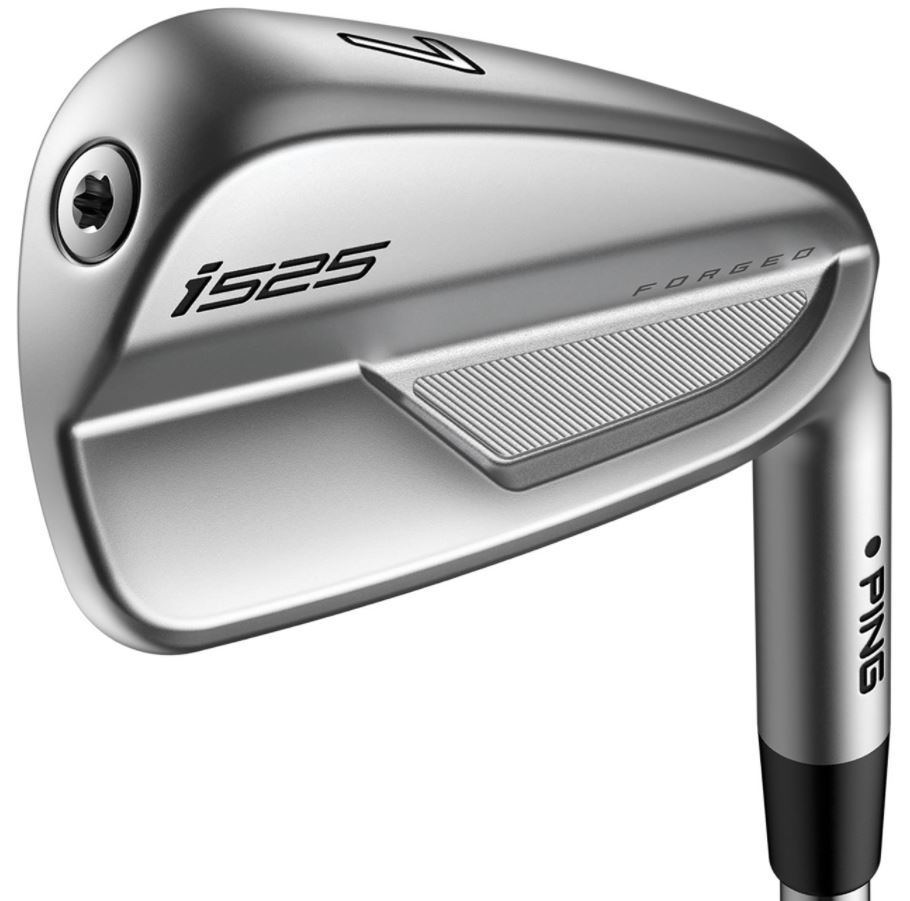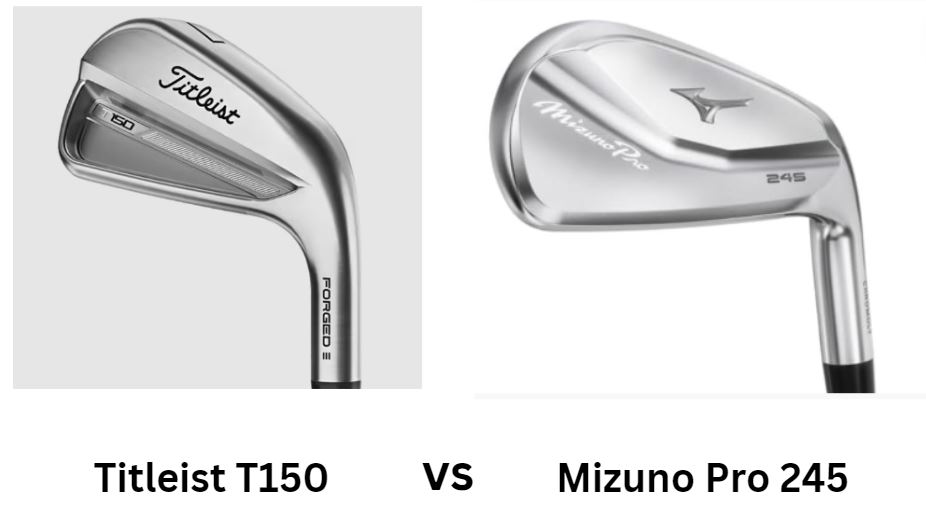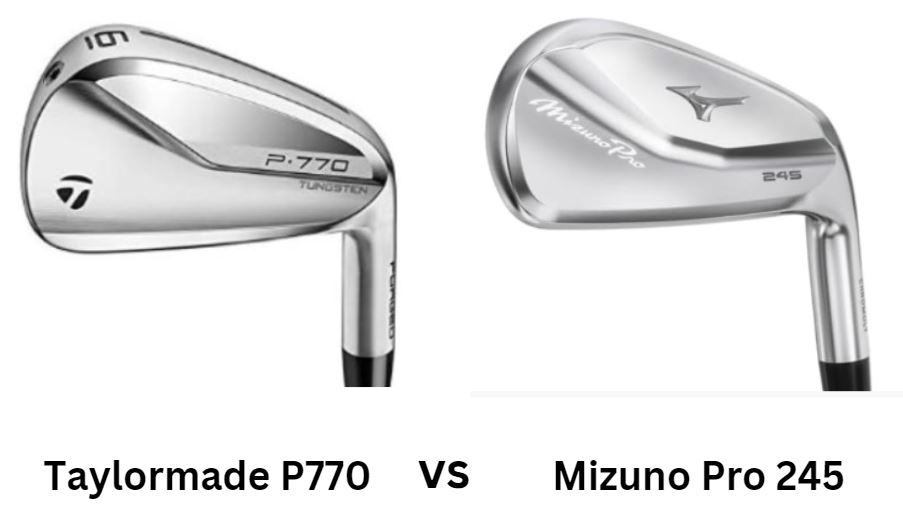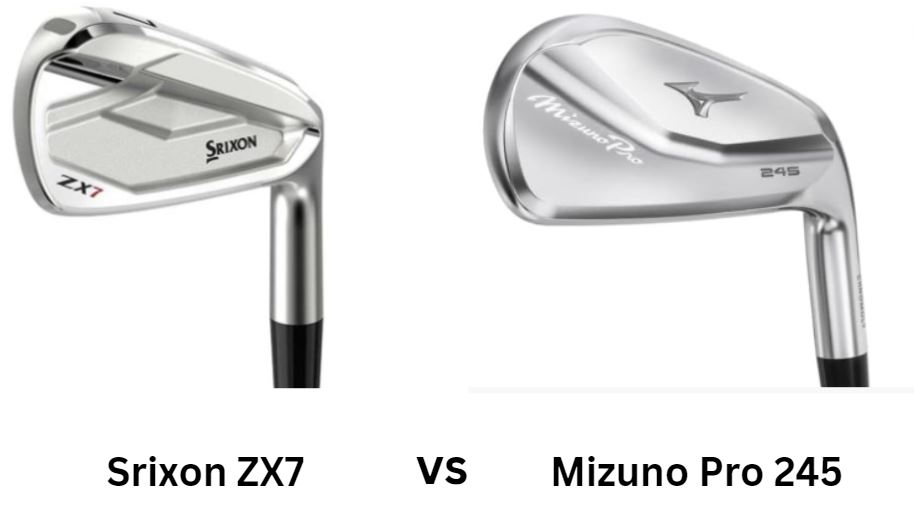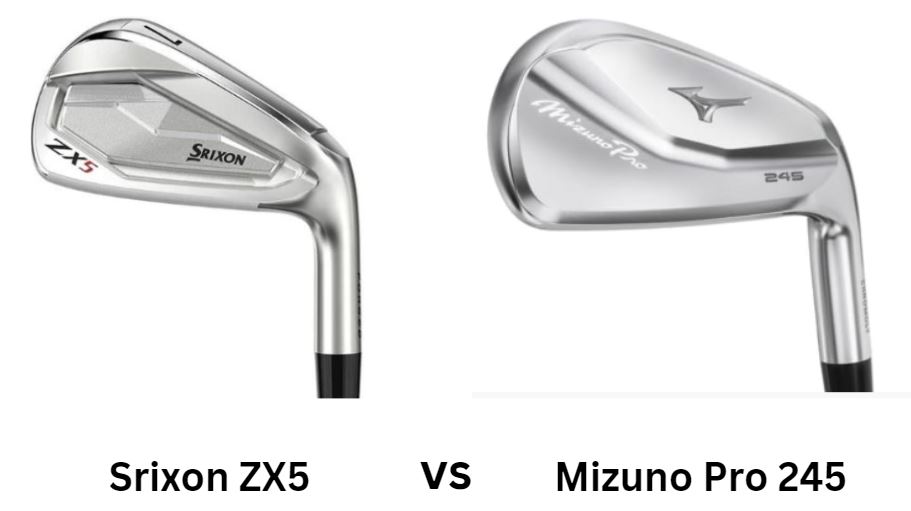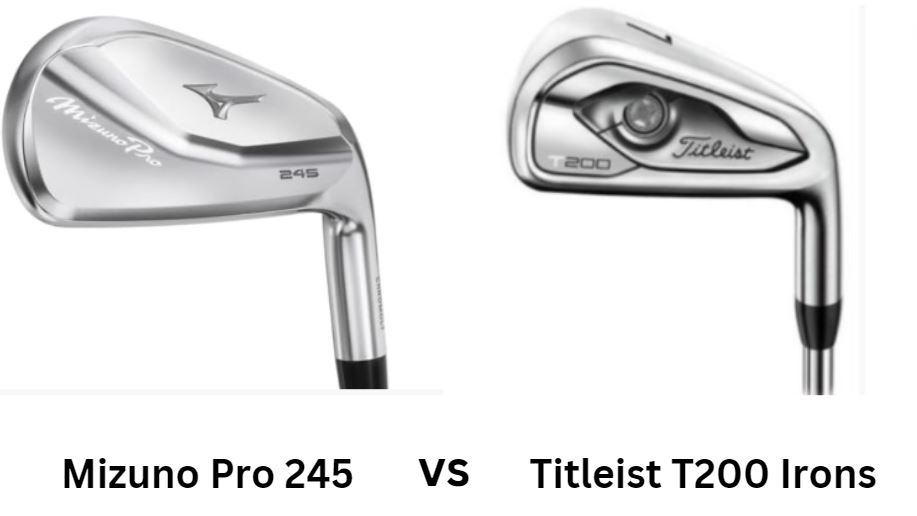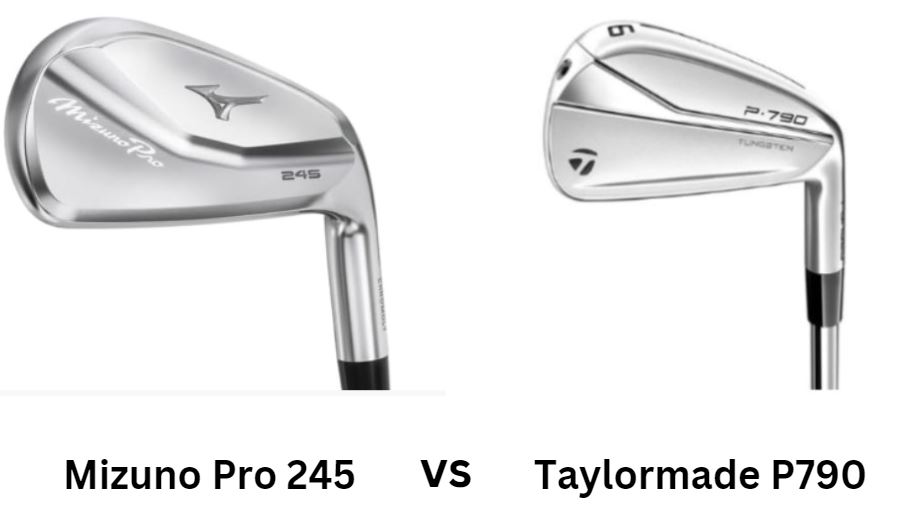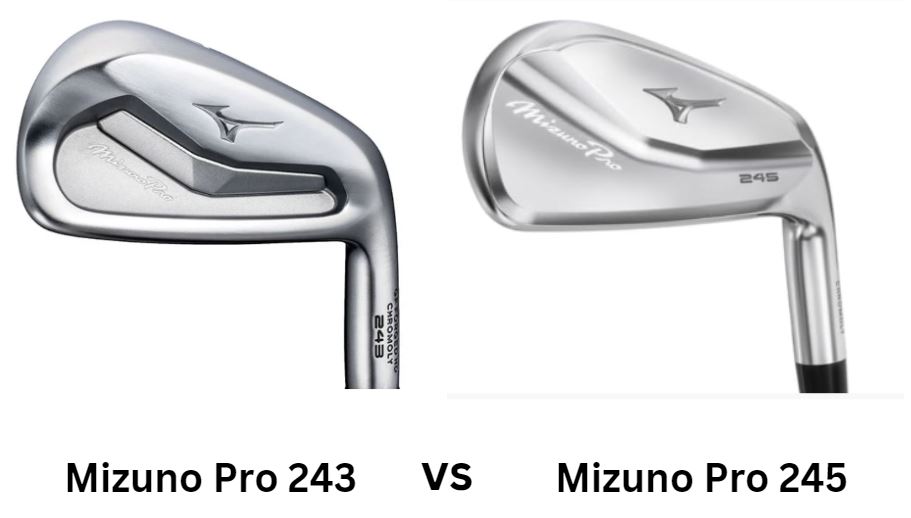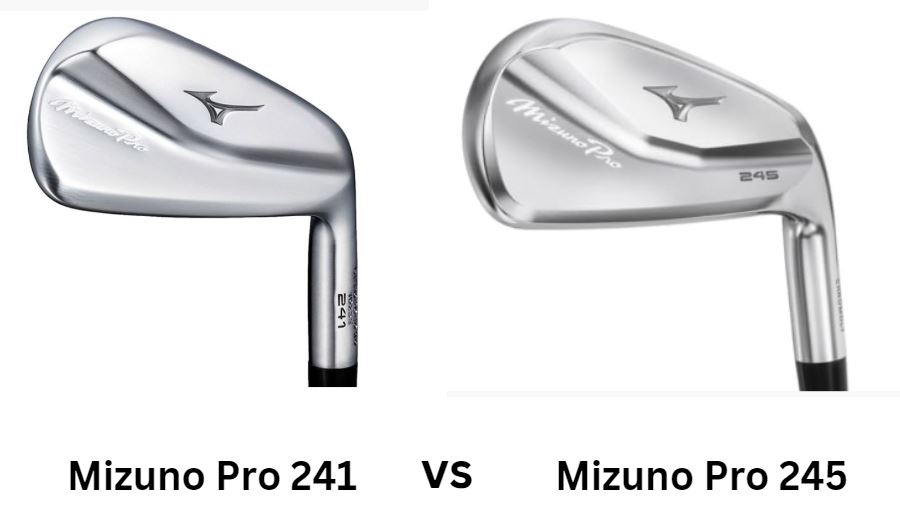Mizuno Pro 245 Vs Ping i525 Irons
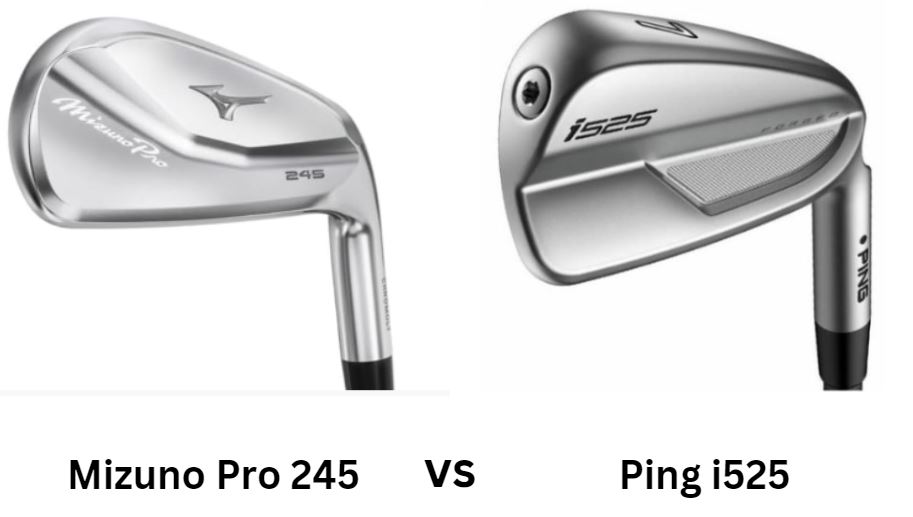
Today we take a look at a couple of player’s distance irons from Ping and Mizuno.
Mizuno Pro 245 Irons Overview
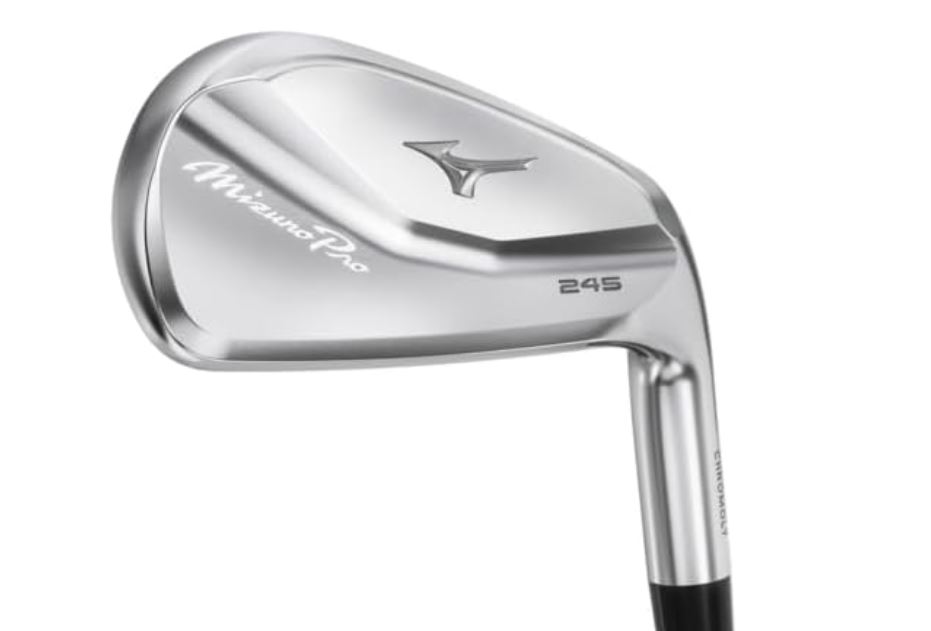
“The Mizuno Pro 245 irons are grain flow forged, have a soft copper underlay and hollow-body design.”
They have the look of blades without actually being blades which is a bonus.
The hollow-body design really helps improve distance but the spin rates stay high on flush shots which increases stopping power.
The chromoly face is also very responsive and delivers a buttery feel on impact. The Mizuno Pro 245s cost $1400.
Ping i525 Irons Overview
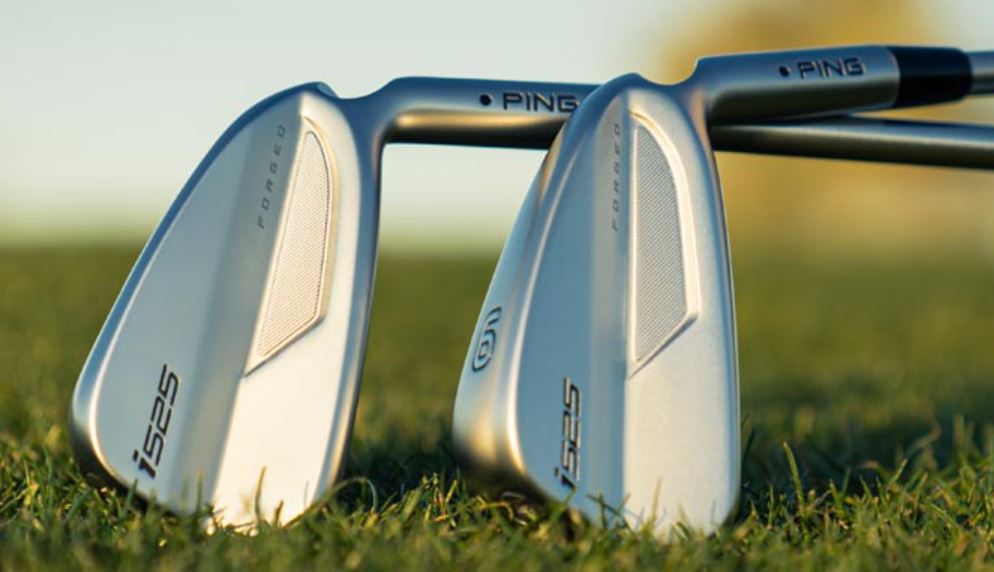
“The i525s feature a forged maraging steel face, perimeter weighting and polymer injection.”
The i525s have slightly more offset than the Pro 245s and the profile is a bit bigger as well.
But they still look sleek while being confidence-inspiring at the same time.
The i525 irons also have slightly weaker lofts so I was getting higher launch which was inhibiting my distance a bit.
The Ping i525s typically retail for about $1000.
“I got more distance out of the Mizuno Pro 245 irons with comparable stopping power to the Ping i525s. That’s why I say the Mizuno Pro 245s are better overall player’s distance irons.”
Mizuno Pro 245 Irons – First Impressions
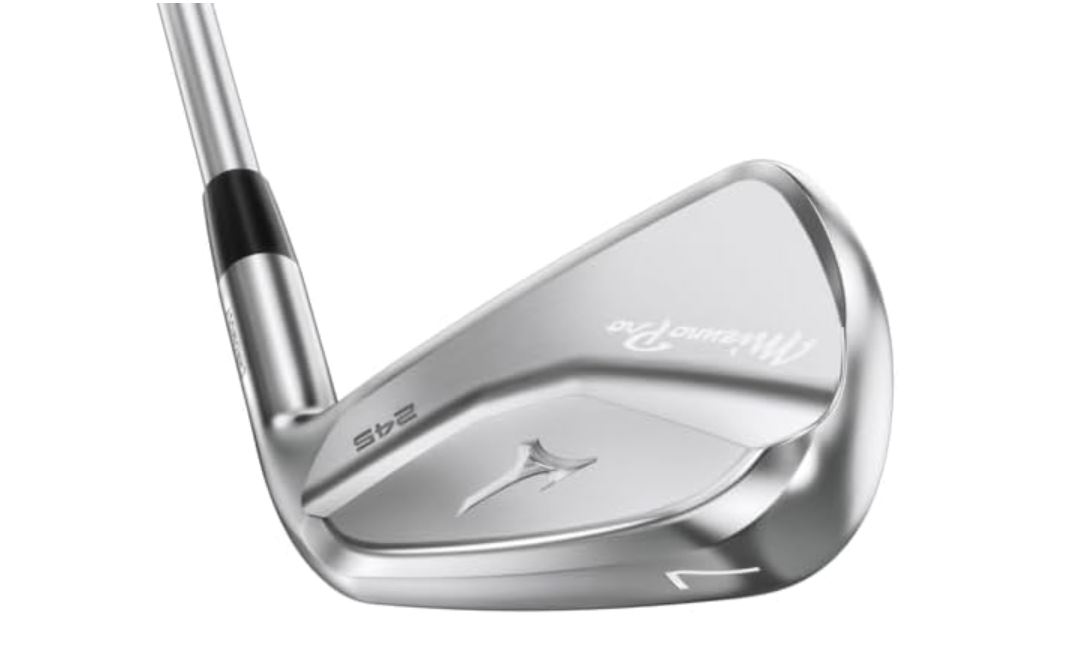
“My first impression of the Mizuno Pro 245 irons was that they looked shockingly similar to the Mizuno Pro 225’s.”
In fact, I set both of them down beside each other and could barely tell the difference.
The scoring lines and hitting in the Mizuno Pro 245 irons are a little lighter in color than the 225’s; but other than that, the 245’s are as compact as the 225’s.
The good news about all that is that the Mizuno Pro 245 irons truly do look like blades even though they technically aren’t blades.
So you get that clean, blade-like look at address with the bonus of a true distance boost.
Irons 2-7 in this set have a suspended tungsten weight which allows for a lower CG without inhibiting face flex.
As a result I was getting great ball speed – 117.4 MPH with the 7-iron on average.
But in the scoring irons, you have a 1025E semi-hollow body with a 17-4 stainless steel back piece to help control the flight a bit more and get the CG a bit higher.
This provides a more solid feel, better feedback and better overall control over spin and launch.
The Mizuno Pro 245 irons also produced near-immediate distance for me. Within the first three swings I was averaging a carry distance of 170.5 yards with the 7-iron.
But what surprised me even more than the distance were the spin rates.
As a player’s distance iron, I was expecting some low spin numbers. But my average spin rate with the Mizuno Pro 245 7-iron was 5200 RPMs.
And keep in mind that these are relatively strong-lofted irons – the 7-iron checks in at 30°.
Ping i525 Irons – First Impressions
The Ping i525 irons first struck us as gorgeous irons with a tremendous feel.
Most of that comes from the forged maraging steel face. It’s also important to note though, that the body’s of these irons are made from 17-4 grade stainless steel.
This gives them a metal-wood flexing effect so they are no slouches in the distance department either.
You just have to have a fast swing speed to get the most distance out of them. Still, the feel is something you will be able to notice right away.
Whether from the tee or off the deck, the feedback is great and they give off a deep, solid and satisfying sound when you pure the ball.
The Ping i525 irons offer a unique combination of forgiveness and player’s performance features.
Extreme Perimeter Weighting
Weights have been added to the toe and shaft tip in order to increase ball speed on errant shots.
Micromax Grooves
The milled grooves are exceptionally tight and help you control loft in the scoring irons.
Forged Face
The forged maraging steel face interacts with the stainless steel body to help increase ball speeds.
Mizuno Pro 245 Irons Selling Points
- Long irons are forged from chromoly
- Scoring irons are forged from 1025E carbon steel
- Hollow body design
- Suspended tungsten weighting in the long irons
- Increased bounce angle for better turf interaction
- 17-4 stainless steel back piece in the scoring irons
- 431 stainless steel back piece in the long irons
- Blade-like appearance
Ping i525 Selling Points
- Forged maraging steel face
- 17-4 stainless steel body
- Extreme perimeter weighting in the toe and shaft tip
- Polymer injected
- Milled groove pattern
- Notched hosel
Who Are the Mizuno Pro 245 Irons for?
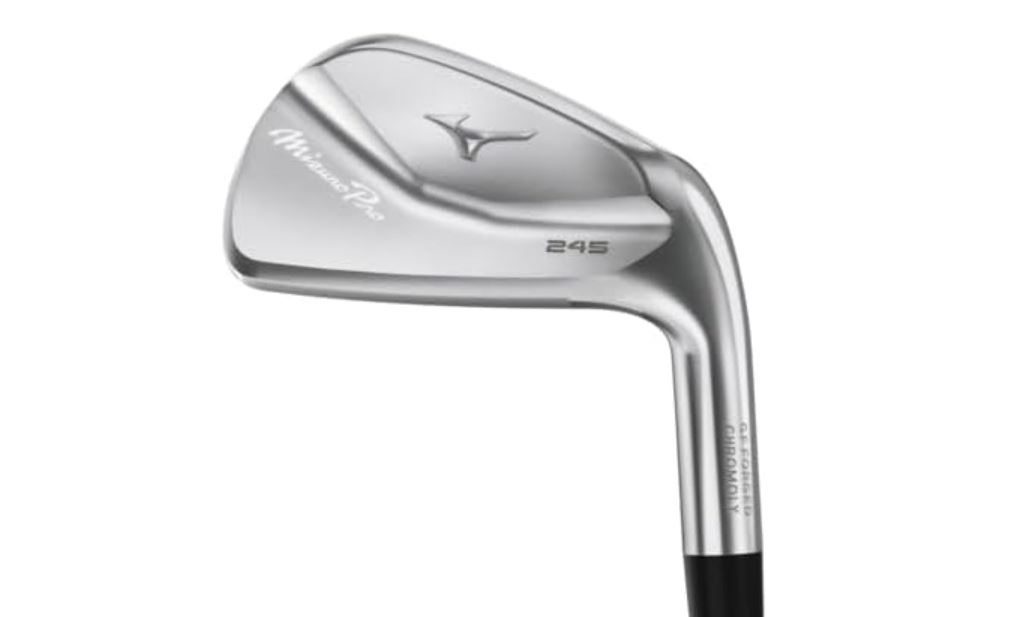
“The Mizuno Pro 245 irons are for the player that really wants the look of blades with the performance of distance irons.”
I can imagine that 13-about 22 handicappers will really like these irons. Of course, as Mizuno irons, the short irons are very workable.
You can feel every nuance of your contact and get a keen sense of overall control.
But it’s the mid and long irons that really impressed me. They will be great for mid and high-ish handicappers who need help staying on the green.
They also don’t look like your typical player’s distance irons.
They aren’t as compact as blades; but everything else is blade-like. The top line is thin, the soles are compact and the offset is nearly non-existent.
The Mizuno Pro 245’s would be great for the player who isn’t quite ready to graduate to blades; but still wants blade-like feel, looks and performance.
The Mizuno Pro Family of Irons
The Mizuno Pro 225 irons have a nearly identical profile to the Mizuno Pro 245’s.
They also share the same grain-flow forging and hollow body design. But the Pro 225’s spin a bit lower than the Mizuno Pro 245’s and have a more penetrating flight.
Distance: 97/100
Accuracy: 97/100
Forgiveness: 95/100
Feel & Control: 98/100

